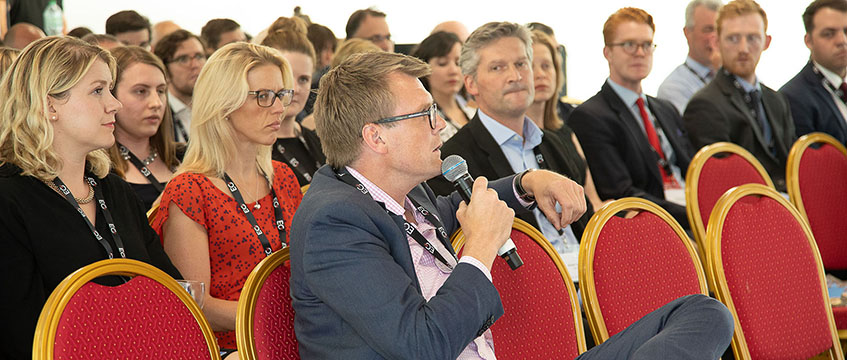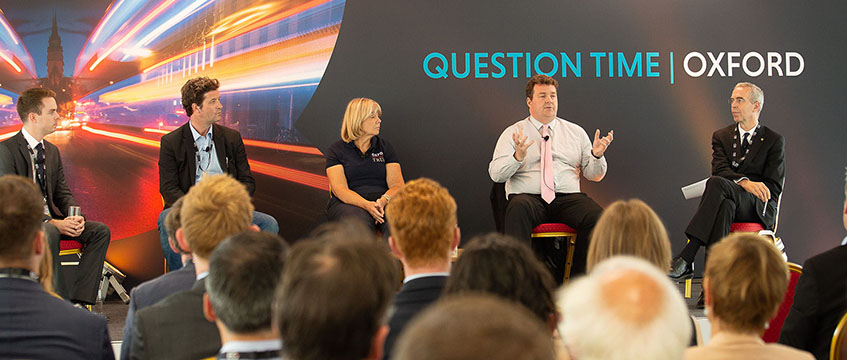Oxford needs a “shared vision” for the future in order to achieve more sustainable growth amid accusations that it is “decaying”.
At EG’s Oxford Question Time Ian Gray, regeneration and economy programme director at Oxford City Council, said: “Science and innovation are great, but what is this doing for others? We don’t just want growth for growth’s sake. We need a shared vision with organisations such as the university working with the City Council, County Council and the business community – that’s what promotes good growth.”
While the city is renowned for its world-famous education, science and research sectors, the development of new schemes to house them is not doing enough for the broader good of the city.
“Growth has been phenomenal in Oxford, particularly in the office sector. There has been a big emergence in the technology and life sciences-based sectors and a huge divergence away from the professional sectors we would usually work with. I am forecasting more growth going forward.”
James Latham
Ian Bogle, founder of Bogle Architects, which designed the new Schrodinger Building that will be home to 3D scanning business Fuel3D at Oxford Science Park, said: “We need to start thinking about different uses for the city centre and look at what is happening in London, such as the new business improvement districts. We need to get landowners together for common causes.”
Other development plans include a new urban district, Oxford North, unveiled by Thomas White Oxford on behalf of St John’s College. Oxford North, previously known as Northern Gateway, will provide 936,460 sq ft of offices, as well as 480 new homes.
However, Spanish infrastructure business Ferrovial, which funds four international businesses from Oxford, has announced plans to relocate from the UK to Amsterdam as a result of Brexit.
Conflict over Oxford city centre
Central to the debate were views on how to regenerate the centre of Oxford, with one audience member suggesting it had been “decaying” for years.
While the city’s major shopping centre, LandSec and the Crown Estate’s Westgate has undergone extensive redevelopment, tensions emerged over how to retain more traditional attractions such as the city’s covered market.
Debbie Dance, director of the Oxford Preservation Trust, said: “Westgate needed to happen. We need to regenerate the city centre and it is possible to do it on the back of the Westgate Centre. I wasn’t a supporter of it and I don’t like it, but it is part of the city.”
“Good growth is about understanding everything about what you are doing. It’s not just about a building or science and innovation, it is also about the cost of living here and the people you want to work here. You won’t get good growth without engaging in those other areas.”
Debbie Dance
James Latham, business and innovation property specialist at Carter Jonas, added: “The harsh reality is that millennials do not shop in the covered market. Westgate is more a leisure complex than a retail destination. The high street needs to evolve and the covered market will need to be redeveloped or it may not be there at all in 20 years’ time.”
Unlike in London, where huge swathes of freeholds are owned by Grosvenor, the Crown Estate and other landed estates, Oxford has a diverse group of landowners that makes placemaking and uniting behind regeneration schemes more difficult.
David Prout, pro-vice-chancellor (planning and resources) at Oxford University, said that it will as a result take an “enormous effort” to redevelop the centre. “Oxford doesn’t have unified land ownership. Oxford city centre does potentially have a great future, but we need to bring the landowners together. It will require 20 years of focused work with a shared vision to do it.”
Innovation and the future
Futureproofing a historic city centre and integrating new technology is a major obstacle for Oxford.
Business and education leaders said the city must try to address the need for drones and automated cars now so as not to fall behind rival cities.
Carter Jonas’s Latham suggested that this would be an “even bigger challenge” than city centre redevelopment, adding: “How do we develop towns and cities so that they are sustainable for generations to come? We may need to start developing helipads and drone pads on the tops of our buildings. This type of work needs to be done now so we get it right for the future.”
“We have got to look at growth in terms of connectivity, not just geographical boundaries. We have already been releasing green belt for development. Landlocked places need that release, but we need to do it well and think about how it will extend the city’s economic power.”
Ian Gray
Integrating more modern transport infrastructure was also urged by Latham, who said the focus should be pushing forward the reopening of the city’s Cowley branch train line, which could potentially link the science park to the city centre.
“I want to see the city centre as a word that describes a huge area of land. We will be talking about the science park as a city centre location eventually.”
Meanwhile, Gray commented that he wanted to focus on land ownership to promote growth. “The amount of landowners [in the area around the science park] is minimal, so we can do deals with people and release land for good growth.”

Speakers
■ James Latham, business and innovation property specialist, Carter Jonas
■ Ian Bogle, founder, Bogle Architects
■ Debbie Dance, director, Oxford Preservation Trust
■ Ian Gray, regeneration and economy programme director, Oxford City Council
■ David Prout, pro-vice-chancellor (planning and resources), Oxford University
■ Chair: Samantha McClary, deputy editor, EG











